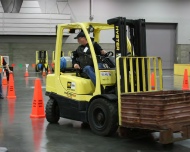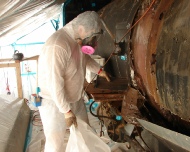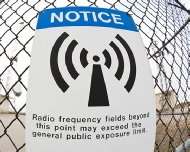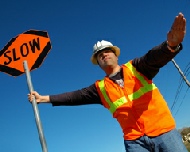
CRUSCO SAFETY, LLC


Crusco Safety, LLC © 2016 All Rights Reserved
Site By Computer Solutions Consulting
FORMERLY VINCENT J. CRUSCO, SAFETY CONSULTANT & TRAINER, LLC.

Now, more than ever, employers can have the peace of mind of having safety training for their employees that is cost effective, and meets and exceeds the requirements of the law.
Vincent J. Crusco Cosulting and Training, LLC., Will come to YOUR location and provide only the most experienced and knowledgeable instructors. All of our instructors have gone through rigorous training and certification. Additionally, most have come right out of the field in which they teach, enabling them to provide key experience on the topic of the day.
All students will receive certification under the guidelines of OSHA, EPA, DEP, DOT and NFPA depending upon the course.
Our consulting staff works with you and your employees to design a perfect safety strategy that is both custom tailored for your business and to meet the guidelines of the regulations.
All of our training and consulting staff is clean, well groomed and uniformed.
The City of Philadelphia’s Department of Licenses and Inspections has begun strict enforcement of new code requirements. From September 30, 2015, Construction Contractors must show proof of OSHA-Authorized safety training.




Our Staff



Philadelphia New OSHA Safety Training Requirements:
All workers directly performing construction or demolition activities for which permits have been issued are required to complete OSHA 10-Hour safety training or an approved safety training equivalent. (Philadelphia Code, Title 4, Subcode A, Section A-1001.4).
This requirement applies to all employees of licensed contractors (including plumbing, electrical, fire-suppression and warm-air contractors) AND State-registered Home Improvement Contractors.
Workers' proof of OSHA 10-Hour safety training will be required to the Department of Licenses and Inspections officials upon request.
OSHA 10 COURSE TOPICS INCLUDE:
- Introduction to OSHA
- Health Hazards in Construction
- Leading Cultural Change
- OSHA Focus/Fatal Four Hazards
- Personal Protective Equipment (PPE)
- Fall Protection
- Scaffolds
- Stairway and Ladders
- Hand/Power Tools & More
Philadelphia New OSHA Safety Training Requirements:
All contractors licensed under Section 9-1004 of the Philadelphia Code must employ at least one supervisory employee who has completed OSHA 30-Hour safety training, or approved equivalent, within the past 5 years. (Philadelphia Code, Section 9-1004(4)(c.1).
Licensed plumbing, electrical, fire suppression and warm-air contractors are not required to employ an OSHA 30-Hour supervisory employee.
Identification of a supervisory employee and proof of OSHA 30-Hour safety training will be required for all new Contractor License applications made after September 30, 2015 and for the renewal of all Contractor Licenses set to expire on or after March 31, 2016.
OSHA 30 COURSE TOPICS INCLUDE:
- Introduction to OSHA
- Reporting and Record Keeping
- Leading Cultural Change
- OSHA Focus/Fatal Four Hazards
- Hazard Communication
- Personal Protective Equipment (PPE)
- Fall Protection
- Fire Prevention
- Scaffolds
- Excavations
- Safety and Health Programs
- Health Hazards in Construction
- Managing Safety and Health
- Electrical
- Confine Space Awareness
- Welding and Cutting & More
OSHA 10 Safety Training
OSHA 30 Safety Training
Designed to meet the requirements of the OSHA 29 CFR 1926.451 Regulation.

In 2010 alone, OSHA reported 7,069 scaffolding violations in job sites across America with 37 workers dying in scaffold related incidents. This makes Scaffolding the second-most cited violation behind Fall Protection, and shows the need for proper safety training in this area of work.
A competent person is a necessity on every job site and is some one who has sufficient experience and/or knowledge to recognize scaffold hazards, correct unsafe conditions, and who has the ability to shut down the worksite until any hazards are corrected. The competent person should be the most knowledgeable person, in this case about scaffold safety, on site.
Our Scaffolding for the Competent Person course ensures that a student will receive all of the proper training pursuant to OSHAs requirement of Competent Persons for this standard 29 CFR 1926.451. This course will go beyond the basic awareness level of introductory courses and into details necessary when learning not just how to protect yourself, but what it takes to create a safe working environment for those you may be responsible for. If your needs to not require a full, competent person level course, we also offer an awareness level Scaffold Safety course.

(Powered Industrial Trucks)
Designed to meet the requirements of the OSHA 29 CFR 1910.178 Regulation.

To help reduce the risk of accidents, OSHA’s Powered Industrial Trucks Standard requires operators to receive the following forklift training:
- Formal instruction (e.g. video, discussion, lecture, written materials, etc.)
- Practical training (demonstrations and practical exercises)
- Evaluation of the operator’s performance in the workplace
Forklift operator training and certification is essential to ensure a safe, compliant work environment. For proper forklift certification, operators must be trained on these topics:
- Vehicle capacity and stability
- Operating instructions
- Vehicle inspection and maintenance requirements
- Load manipulation, stacking and unstacking
- Pedestrian traffic in areas where the vehicle will be operated
- Operating in narrow aisles and restricted places
- The requirements of OSHA’s forklift standard

Designed to meet the requirements of the OSHA 29 CFR 1910.1001 Regulation.

Our Asbestos Awareness training course provides students with the information they will need to identify work areas where asbestos may be present, understand the harmful effects of asbestos, describe methods to avoid asbestos exposure, and become familiar with OSHA and EPA standards designed to protect workers on the job site, among many other important topics.
Students who should take this course are those who may be exposed to asbestos on the work site.
Asbestos Awareness Training
This is a certificate-level safety course designed to familiarize you with basic occupational safety, health principles and techniques that relate to Lead Awareness in Construction. This course emphasizes safety and health regulatory standards, as well as environmental standards and best management practices. Coupled with job and site specific training, this course is designed to comply with the OSHA initial and annual lead awareness training requirements specified in 29 CFR 1926.59 and 29 CFR 1926.62(l).
Lead Awareness Training


Designed to meet the requirements of the OSHA 29 CFR 1926 Subpart M Regulation.

Did you know that falls are the leading cause of construction accidents with over 500 fall related deaths occurring every year? Fall protection training is an important part of a worker’s overall safety training. Identifying fall hazards and deciding how best to protect workers is the first step in reducing or eliminating fall hazards. Occupational fatalities caused by falls remain a serious public health problem. Any time a worker is at a height of four feet or more, or is working over dangerous equipment or machinery, the worker is at risk and needs to be protected. The proper fall protection training will go a long way in achieving this.
This important safety course will show you a variety of methods to safeguard you from falling at height, including how to properly use fall protection equipment, as well as provide guidance on how safety managers can ensure a safe workplace for their workers, certifying you under OSHAs Fall Protection standard 29 CFR 1926 Subpart M.

Design to meet the requirements of the OSHA Standard 29 CFR 1910.97


High Quality OSHA RF Safety Training for Your Workers on their Schedule.
Our comprehensive RF Safety Awareness course is designed for all industries with employees exposed to radio frequency energy. This training is relevant to construction trades and personnel that encounter RF on wireless towers, rooftops and other workplaces.
Workers trained in as little as one hour. TRAINING IS OSHA COMPLIANT.
You are liable for fines if RF site workers are untrained when OSHA visits. Worse, many carriers and turf contractors will not permit your crews on site without current RF training certification!
The OSHA RF SAFETY AWARENESS course is oriented to wireless industry and rooftop workers. However, it is relevant to all trades and types of personnel that may encounter radio frequency exposure in the workplace.
Who Needs RF Safety Training?
General Wireless Worker Course:
• Tower workers
• Cellular Technicians
• Cell site maintenance crews
Rooftop Worker Course:
• Roofers – Painters – Window washers
• Building engineers
• Air conditioning mechanics
• Firefighters & public safety personnel
What does the RF Safety Training Course Cover?
• The biological effects of RF energy
• Ionizing versus non-ionizing
• The FCC’s Maximum Permissible Exposure (MPE) standards
• OSHA and industry RF Compliance
• Documentation of compliance
• Methods of achieving compliance
• Roofview™ and TowerCalc™ software description and application
• Periodic review and site modification requirements
• RF Personal Monitor Use
What are the course takeaways?
• Certificate of completion
• Course available for review
• Examination record to employer
• Record of annual refresher training
• Awareness of your RF environment
• Knowledge for self protection from RF



Designed to meet the requirements of DOT and OSHA Regulations and ANSI Standards.

Controlling traffic through work areas is one of the most important -- and dangerous -- operations in construction maintenance. Our Training Course is a comprehensive skill-building session that meets federal industry guidelines: the Manual on Uniform Traffic Control Devices (MUTCD) guidelines and the ANSI standard ISEA-107-1999. The Office of Highway Safety, the Federal Highway Administration, and several state Departments of Transportation have reviewed this program.
Training goal
The primary objectives of the program are to train flaggers to provide safe passage of traffic through and around work areas and to minimize confusion by bringing standard flagging procedures to our nation's highways. To get your crew members trained and certified in safe flagging techniques in just four hours.
Who should attend?
This course is a must for novice construction work zone flaggers in both one- and two-person flagging operations. Experienced flaggers can attend this course as a refresher. All attendees receive a certificate of course completion.
What you'll learn:
Thorough understanding of flagging procedures and proper use of required equipment.
Improved flagging skills from hands-on training, classroom activities and a flagging skills test.
Increased ability to coordinate traffic movement through the work zone.
| Alphabetical Course Listing |
| Construction & Industry |
| Hazardous Materials |
| Confined Space |
| Electrical & Hydraulic |
| Health & Medical |
| Fire Protection |
| Technical Writing |
| Inspections & Site Safety |